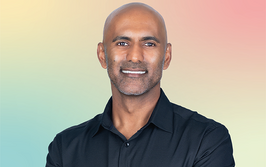Opening Pandora’s Patient Portal
The debate over patient access to medical records rages on
The receptionist at my doctor’s office assured me there was nothing to worry about. “All of the tests came back normal,” she said.
"Great!" May I have a copy of the results, please?”
“Well, we don’t normally do that…”
One possible reason for her reluctance came to light a couple of days later, when I picked up the printouts and discovered that few of the results were, in fact, “normal!” Because of my persistence, I was able to check them myself and then discuss and address the issues at my next appointment. But what if I hadn’t been allowed to see my records? What could have happened to my health over the long term if those test results – clearly marked by the laboratory as out of the normal ranges – had dropped off the radar for an indeterminate amount of time?
It’s a question I have seen hotly debated at conferences and on social media recently: should patients be given access to their own medical records? Proponents of open access feel that patients have a right to the information, and that it can serve as an additional layer of protection against potential error – as in my case. Those who disagree argue that there are dangers involved in giving non-experts unfettered access to specialist information: it can be confusing or difficult to interpret, may require a change to standard reporting language or format, and risks distressing patients who don’t fully understand the implications of the data.
If these discussion points sound familiar, it may be because they’re the same ones often used to debate the pros and cons of direct-to-consumer genetic testing. It’s not a question of whether or not patients have a right to the information; rather, how can they exercise that right while avoiding its potential pitfalls?
There’s no right or wrong answer. Some pathologists tackle the problem by holding “office hours” in which patients can visit them to view and discuss their results (1), thus sidestepping the problem of unnecessary anxiety arising from inexpert interpretation. Others provide a brief summary of the report in layman-friendly language. Another approach is to educate patients on their disease in general terms, so that they’re better equipped to understand any reports they may read going forward. And sometimes, the reports may not be for the benefit of the patient alone – see Kamran Mirza’s description this month of the relief he felt because he was able to read his mother’s pathology report here.
What do you think? Should patients have open access to their medical records – and, if so, what role can pathologists play in helping to prevent the inevitable misunderstandings?

Michael Schubert
Editor
- U Balis, “Pathology for the People”, The Pathologist, 30, 46–49 (2017). Available at: bit.ly/2yMgEgj.

While obtaining degrees in biology from the University of Alberta and biochemistry from Penn State College of Medicine, I worked as a freelance science and medical writer. I was able to hone my skills in research, presentation and scientific writing by assembling grants and journal articles, speaking at international conferences, and consulting on topics ranging from medical education to comic book science. As much as I’ve enjoyed designing new bacteria and plausible superheroes, though, I’m more pleased than ever to be at Texere, using my writing and editing skills to create great content for a professional audience.




















